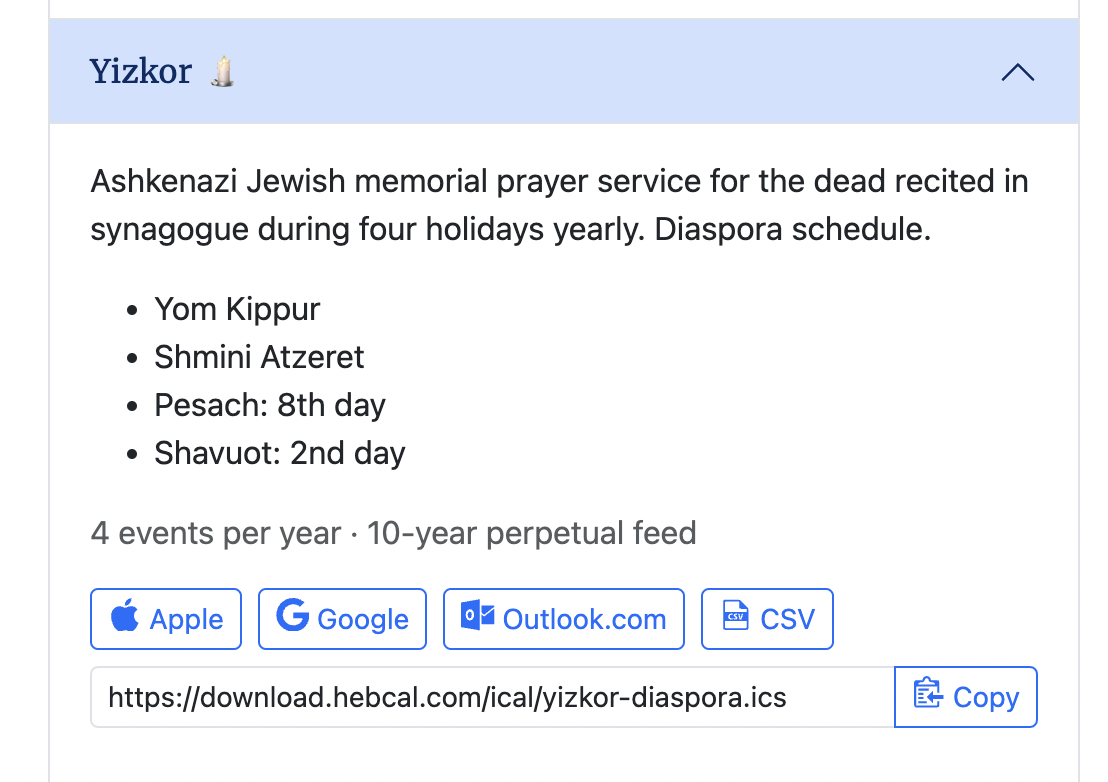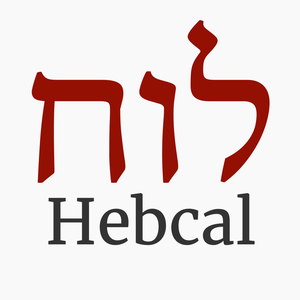Your comments
Looks like ט׳ שבט תרצ״ג which is the 9th of Sh'vat, 5693
https://www.hebcal.com/converter?hd=9&hm=Shvat&hy=5693&h2g=1
We have added an optional Yizkor checkbox to the custom calendar page at https://www.hebcal.com/hebcal
We have also added a dedicated Yizkor calendar to this page https://www.hebcal.com/ical/

We've added a dedicated Yizkor calendar to this page https://www.hebcal.com/ical/

Hi, thanks for contacting Hebcal.
Tu B’Av for Hebrew Year 5785 begins at sundown on Friday, 8 August 2025 and ends at nightfall on Saturday, 9 August 2025.
https://www.hebcal.com/holidays/tu-bav-2025
Tu B’Av (Hebrew: ט״ו באב, the fifteenth of the month Av) is a minor Jewish holiday. In modern-day Israel, it is celebrated as a holiday of love (חג האהבה Ḥag HaAhava).
Are you seeing a different date published somewhere?
thank you so much for your patience. The problem should be fixed now. You can find it by searching for Hebcal in the Apple App Store, or you can directly get it via this link.
https://apps.apple.com/us/app/hebcal-hebrew-calendar/id1582733315
thank you so much for using Hebcal and thanks for contacting us. We can confirm the same problem and we are working to resolve the issue. We expect the watch app will be back in the Apple Watch app store within 24 to 48 hours.
Thanks for the feedback! We will consider adding this as an optional checkbox on the regular calendar. In the meantime, please use the Yahrzeit calendar and check the "Include Yizkor dates" box.
Hi, thanks for contacting Hebcal.
The @hebcal/hdate JavaScript source code that you are referencing is licensed under the GPL-2.0 license
https://github.com/hebcal/hdate-js?tab=GPL-2.0-1-ov-file#readme
If you are reusing source code to build your functionality, please be sure to note the The GNU General Public License 2.0 requirements.
The CC BY 4.0 license applies to content generated by web APIs, but not for source code reuse.
Customer support service by UserEcho


When specifying years of the Hebrew calendar in the present millennium, we omit the thousands (which is presently 5, ה). For example, the Hebrew year 5782 is written as 782 (תשפ״ב) rather than 5782 (ה׳תשפ״ב).
You can read more here:
https://www.hebcal.com/home/1824/numerical-values-of-hebrew-letters